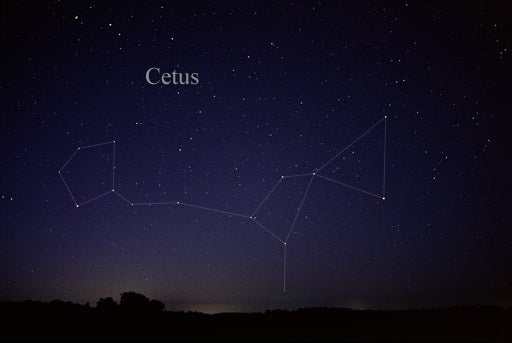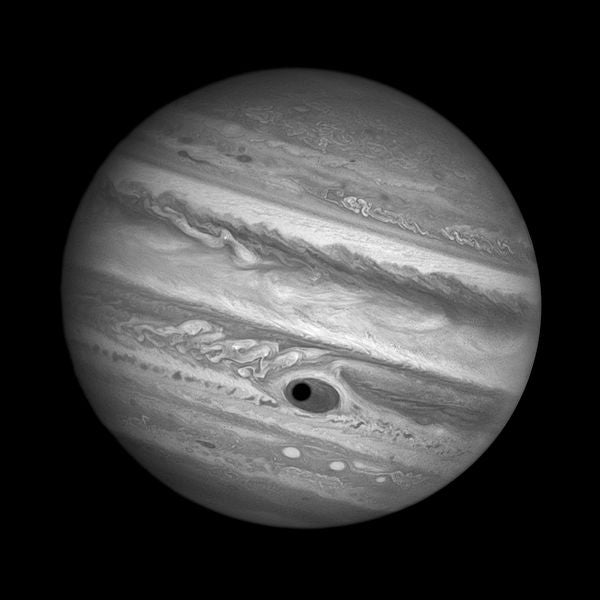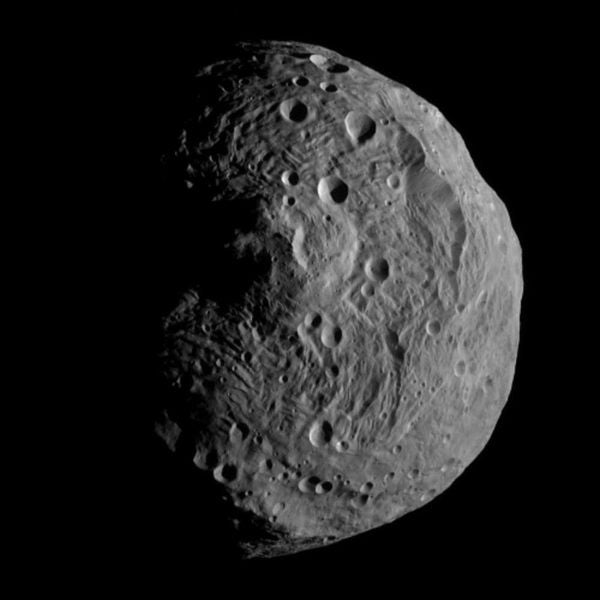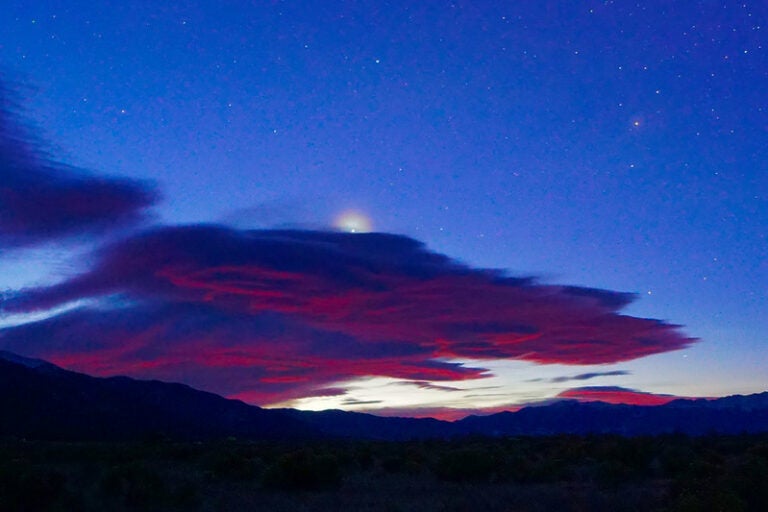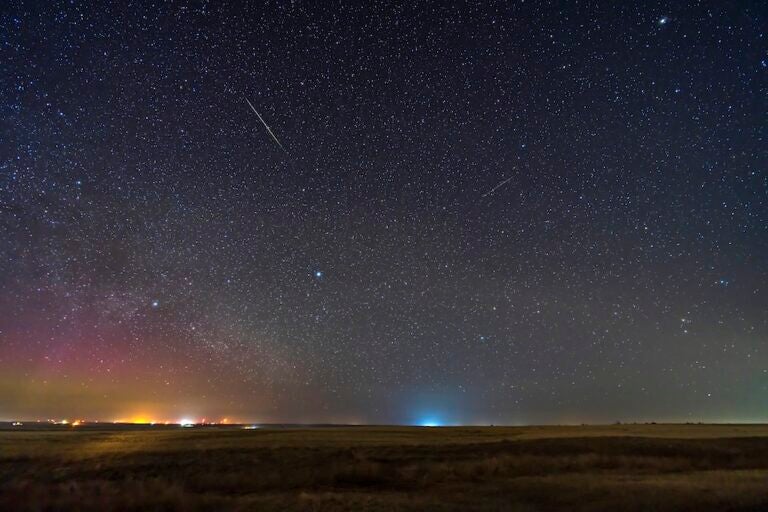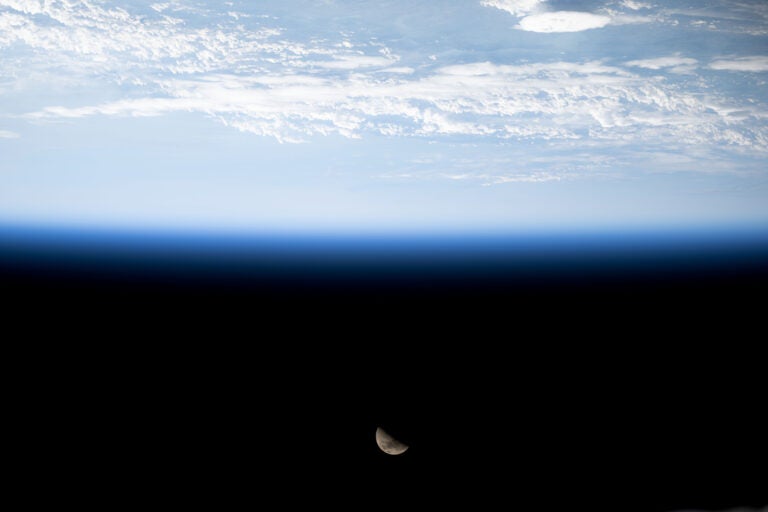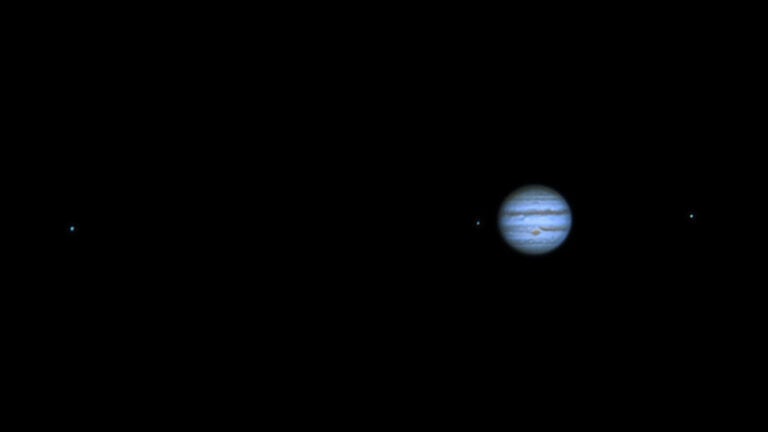Friday, February 3
First Quarter Moon arrives at 11:19 p.m. EST. You can find the half-lit orb high in the south as darkness falls and then watch it sink toward the western horizon throughout the evening hours. The Moon spends the evening hugging the border between the constellations Aries the Ram and Cetus the Whale.
Saturday, February 4
Mercury appears low in predawn twilight for the next couple of days. This morning, the innermost planet lies 4° high in the southeast 30 minutes before sunrise. Shining at magnitude –0.2, the planet should show up nicely in the twilight glow. (If you don’t see it right away, binoculars will bring it into view.) Mercury’s disk spans 5″ and appears nearly full when viewed through a telescope.
Sunday, February 5
The waxing gibbous Moon lies just east of the 1st-magnitude star Aldebaran this evening. Depending on where in North America you live, the gap appears to be between 1° and 3° in early evening and grows a bit more than 0.5° every hour thereafter. Aldebaran represents the eye of Taurus the Bull and appears to mark one tip of the V-shaped Hyades star cluster. In reality, Aldebaran lies only about half as far from Earth as the cluster does.
Monday, February 6
Venus appears brilliant in the early evening sky starting within a half-hour after sunset. Although it reached greatest elongation nearly a month ago, when it appeared 47° east of the Sun, the planet will remain the evening sky’s brightest point of light through late March. It currently shines at magnitude –4.8, some 10 times brighter than the second-brightest object, Jupiter. Venus lies among the background stars of Pisces the Fish, slightly east of that constellation’s Circlet asterism. This region stands some 30° high in the west-southwest an hour after the Sun goes down and doesn’t set until 9 p.m. local time. When viewed through a telescope this evening, Venus appears 34″ across and about one-third lit.
The Moon reaches perigee, the closest point in its orbit around Earth, at 9:02 a.m. EST. It then lies 229,172 miles (368,816 kilometers) away from us.
Tuesday, February 7
Saturn rises more than three hours before the Sun and climbs some 15° high in the southeast by the time morning twilight begins. The ringed planet shines at magnitude 0.5 among the much fainter background stars of Ophiuchus the Serpent-bearer. When viewed through a telescope, Saturn shows a 16″-diameter disk surrounded by a stunning ring system that spans 36″ and tilts 27° to our line of sight.
Wednesday, February 8
For those of you in the Southern Hemisphere, today marks the peak of the annual Alpha Centaurid meteor shower. And with the waxing gibbous Moon setting nearly two hours before morning twilight begins, viewing conditions should be excellent. The shower’s radiant — the point from which the meteors appear to originate — lies among the background stars of Centaurus (although, oddly enough, closer to 1st-magnitude Beta [b] Centauri than to its brighter neighbor, Alpha [a] Cen). The shower typically produces about 6 meteors per hour at its peak, although observers have reported between 20 and 30 per hour in a couple of years. The meteors tend to be bright and often leave persistent trains.
Thursday, February 9
Jupiter rises around 10:30 p.m. local time and climbs highest in the south nearly 90 minutes before morning twilight commences. The giant world shines at magnitude –2.2 against the backdrop of central Virgo, some 4° north of that constellation’s brightest star, 1st-magnitude Spica. Even a small telescope reveals the planet’s 40″-diameter disk and four bright moons. But this morning, viewers in western North America get a bonus because the gas giant appears to have a “black eye.” It is actually the dark shadow of Ganymede, the solar system’s largest moon, which crosses Jupiter’s north polar region from 2:49 to 5:22 a.m. PST.
Friday, February 10
Full Moon arrives officially at 7:33 p.m. EST, but it looks completely illuminated all night. You can find it rising in the east at sunset and peaking in the south shortly after midnight local time. It dips low in the west by the time morning twilight begins. The Moon spends the night in western Leo, not far from the Lion’s brightest star, 1st-magnitude Regulus. Look carefully this evening and you should notice the distinct dusky shading of a penumbral lunar eclipse over Luna’s northern half. The eclipse peaks at 7:44 p.m. EST, when 99 percent of the Moon lies within our planet’s light outer shadow.
Saturday, February 11
Although asteroid 4 Vesta reached opposition and peak visibility in mid-January, the brightest minor planet of 2017 still shines at magnitude 6.8 and shows up quite easily through binoculars. To find the minor planet, start at magnitude 1.2 Pollux in northern Gemini and then drop 2.4° southwest to magnitude 4.1 Upsilon (u) Geminorum. Vesta lies 0.5° south-southeast of Upsilon this evening.
Sunday, February 12
Mars continues to put on a nice show these February evenings. It appears nearly 30° high in the west-southwest once twilight fades to darkness, though it’s easier to find by looking 6° (about one binocular field) to the upper left of brilliant Venus. The magnitude 1.2 Red Planet currently lies among the background stars of Pisces the Fish. A telescope shows the world’s 5″-diameter disk, but you likely won’t see any surface detail.

